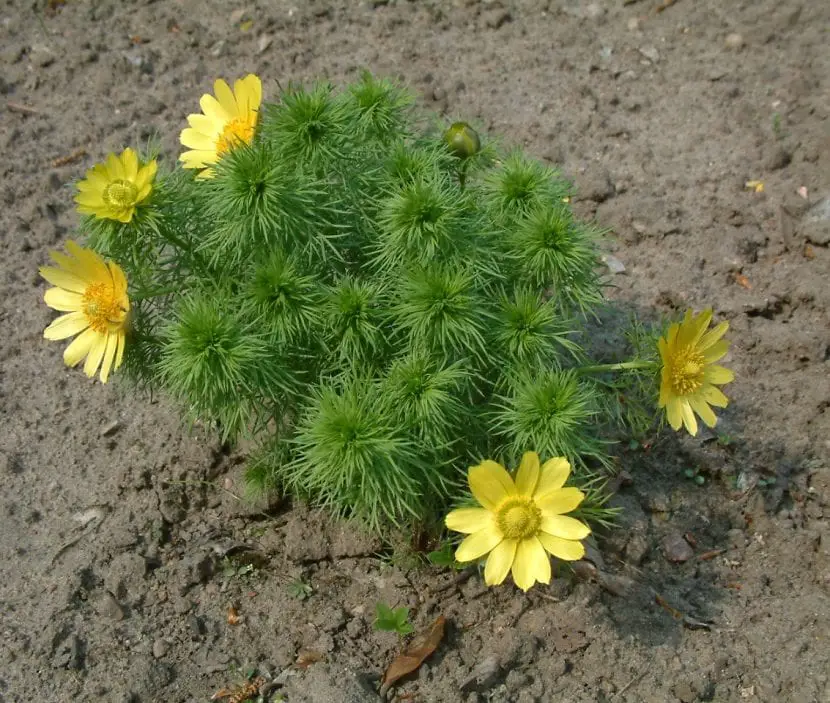
Did you know that there are many herbaceous plants that, in addition to being precious and easy to care for, have medicinal properties? One of them is the one known by the scientific name Adonis Vernaluswhich produces yellow flowers of good size and spectacular beauty.
Its rapid growth makes it one of those plants that make a garden; that is to say, they give life to the place. Do we know it?
Origin and characteristics

Our protagonist is an annual herb (its life cycle lasts one year) whose scientific name is Adonis Vernalusalthough popularly it is called as partridge eye or spring adonis. It is native to the Middle East, but has become naturalized in Europe (including the Iberian Peninsula), Asia, and North Africa.
Reaches a height of 10 to 45 centimeters talland develops a glabrous or glabrescent stem from which sessile leaves sprout, green in color that give it a feathery appearance. The flowers are 3 to 8cm in diameter, and are composed of 10-20 petals. The fruit is a 3-4mm achene, almost globose and pubescent.
It is used as a medicinal, collecting from April to May and then drying with hot air. Thus, it becomes a very complete plant, since it regulates cardiac functions, is hypotensive, anticonvulsant, antiepileptic and also prevents myocarditis.
Is it prohibited in Spain?

Unfortunately yes. It is poisonous to livestock. And it is so much so that it is said that cows and goats that consume it can transmit its toxicity through milk to people.
ORDER SCO / 190/2004, of January 28, prohibits the sale to the public of both the plant and its preparations, but restricts its use to the preparation of medicines, and homeopathic strains – as long as a doctor controls and tracing-.
But that doesn’t mean it’s pretty, does it?

